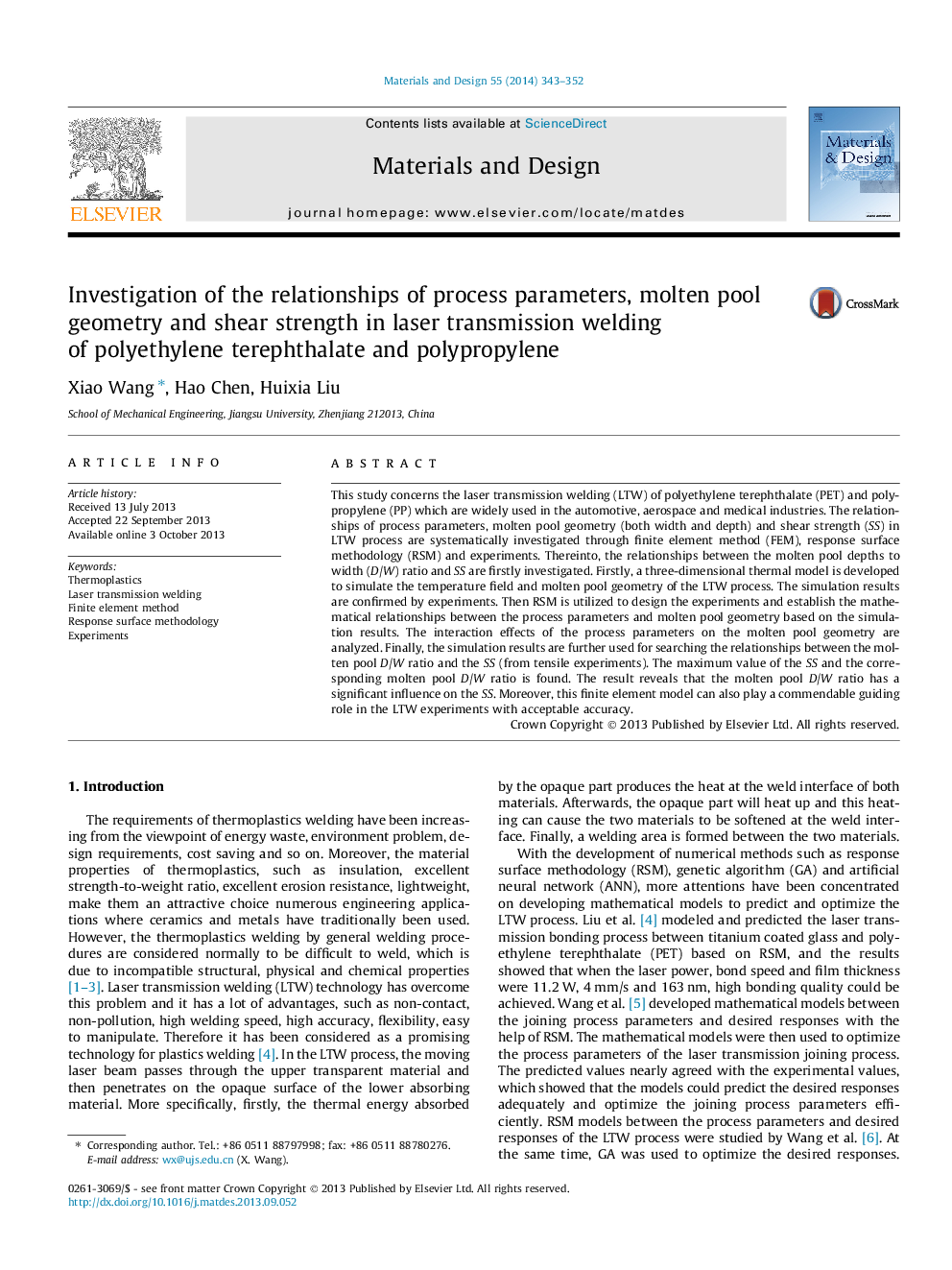| Article ID | Journal | Published Year | Pages | File Type |
|---|---|---|---|---|
| 829544 | Materials & Design (1980-2015) | 2014 | 10 Pages |
•FEM is used to simulate the LTW process and is validated by the experiments.•The molten pool geometry (both width and depth) are studied in detail by FEM.•RSM models are developed between process parameters and responses of interest.•The interaction effects of process parameters on the WW and DTA are investigated.•The influence of molten pool D/W ration on the shear strength is firstly studied.
This study concerns the laser transmission welding (LTW) of polyethylene terephthalate (PET) and polypropylene (PP) which are widely used in the automotive, aerospace and medical industries. The relationships of process parameters, molten pool geometry (both width and depth) and shear strength (SS) in LTW process are systematically investigated through finite element method (FEM), response surface methodology (RSM) and experiments. Thereinto, the relationships between the molten pool depths to width (D/W) ratio and SS are firstly investigated. Firstly, a three-dimensional thermal model is developed to simulate the temperature field and molten pool geometry of the LTW process. The simulation results are confirmed by experiments. Then RSM is utilized to design the experiments and establish the mathematical relationships between the process parameters and molten pool geometry based on the simulation results. The interaction effects of the process parameters on the molten pool geometry are analyzed. Finally, the simulation results are further used for searching the relationships between the molten pool D/W ratio and the SS (from tensile experiments). The maximum value of the SS and the corresponding molten pool D/W ratio is found. The result reveals that the molten pool D/W ratio has a significant influence on the SS. Moreover, this finite element model can also play a commendable guiding role in the LTW experiments with acceptable accuracy.
